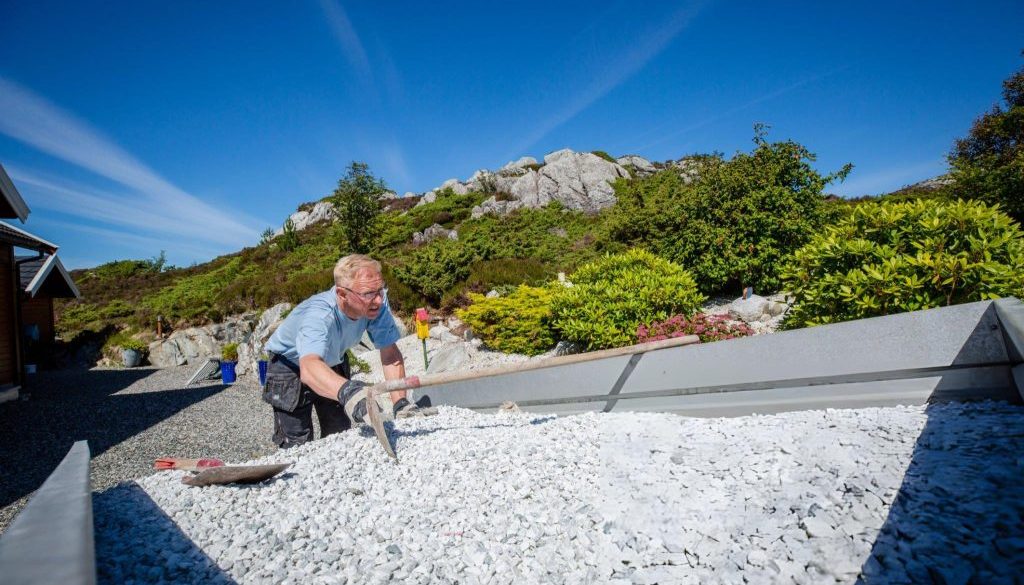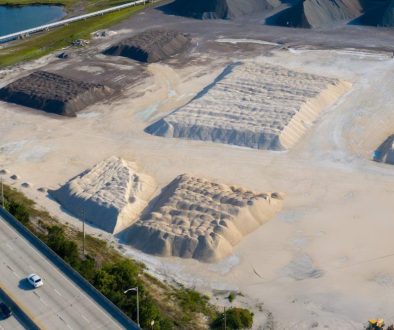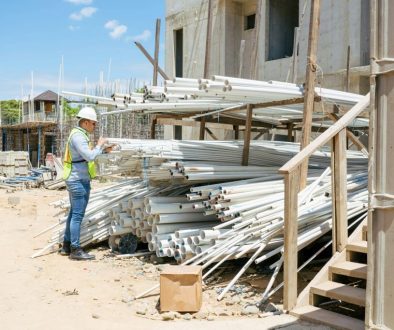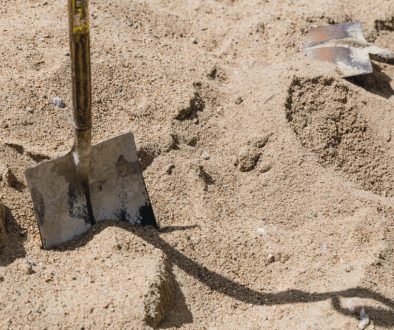When people look up “20mm gravel near me,” they usually just want to get on with a job. It might be for a driveway, garden path, or a new soakaway. Whatever the project, this type of gravel is often just what’s needed. But before placing the order, it’s smart to take a step back and double-check a few things.
Not all gravel is the same, even if it looks that way on the surface. The size, shape, and quality can all affect how well it works once it’s placed. And with colder, wetter weather on the way across Cheshire, getting the timing right matters too. You don’t want material showing up when the ground’s too soft or if daylight runs out before you’ve had a chance to spread it.
By thinking things through now, you’ll be ready when the delivery shows up, and you can avoid having to reorder or fix problems mid-project.
What 20mm Gravel Is Used For
20mm gravel is made from harder stone, usually limestone or granite, that’s crushed down and screened to size. The sharp, angular edges help it lock into place once spread and compacted, which is part of what makes it so useful.
We tend to see it used in places like:
• Driveways that need a sturdy but attractive surface
• Garden footpaths or walking areas that stay rough enough underfoot
• Soakaways and drainage setups for moving water through soil
• Bedding layers under larger outdoor structures like sheds or greenhouses
Because of its size, 20mm gravel allows water to pass through fairly easily. That’s helpful in areas that get a lot of rain, like parts of Cheshire, since it helps stop puddles from forming or washing away your path. If you’re working with clay soil, it can also give the surface more grip and hold.
On our aggregates page, we highlight that 20mm gravel is one of our most popular choices for driveways, ground stabilisation, and garden beds thanks to its drainage properties and durable finish.
Spotting the Quality Differences
When gravel arrives, it should be clean, consistent, and ready to use. But that’s not always what turns up. Broken or low-quality gravel doesn’t bind well, and that can leave your finished surface patchy or messy.
Here’s what to watch for:
• Clean loads without too much fine dust or mud
• Stones that are mostly the same size, not oversized or crushed to bits
• No unexpected rubbish or bits that don’t belong
If the gravel is too dusty, it can clog up drains instead of helping water flow. If the pieces are uneven, the surface might shift underfoot or vehicle tyres. That’s why it makes sense to ask a few questions before ordering. A short conversation with the supplier can help confirm you’re getting decent material instead of something that needs sorting through.
Enviro Skip Hire always supplies 20mm gravel that is washed and sorted for size, making it more reliable for construction and landscaping projects around Cheshire and Staffordshire.
Things to Know About Delivery
Good gravel is only useful if it shows up when and where you need it. At this time of year, autumn weather can throw things off quite fast. A good plan makes things move smoother.
• Make sure lorries can get to the delivery spot without trouble
• Have a clear, level place ready for tipping the gravel
• Keep in mind how you’ll move the material (barrow, shovel, or machine)
It’s no fun trying to shovel heaps of gravel in fading light or light rain. That’s why timing matters. If the load arrives late in the day or after a heavy bit of rain, the ground could go soft quick, and that slows the whole process down. Getting everything sorted while it’s still mild outside can make the rest of the work easier.
If you plan ahead and know exactly where the gravel is going, it will help avoid wasted effort later. Take a walk around your site before delivery day, and clear any obstacles that could block the lorry or tipper. Also, let neighbours know if it could affect shared driveways or access routes. These small steps make a real difference.
Getting the Right Amount
Running short halfway through a job is frustrating. Ending up with too much gravel doesn’t help either, especially if you don’t have space to keep it dry. That’s why it’s worth doing a quick check before ordering.
A good way to work it out:
1. Measure the length and width of the area you’re covering
2. Decide how deep the gravel needs to be (usually around 50mm)
3. Use a gravel volume calculator to find your total in cubic metres
If you’re not sure, we always say it’s best to talk it through with someone who knows about local ground conditions. Some areas in Cheshire might drain fast, while others might soak up the lot depending on soil type. The right depth and volume will help keep it solid and stop it from spreading too thin over time.
Remember, gravel tends to settle once it is driven or walked on, so it’s best to order a little bit extra, but not so much that you can’t use it. You also want to avoid blocking paths, gardens, or pavement with left over piles. Careful planning keeps your project tidy and moving forward.
Planning for Autumn Weather in Your Area
As November rolls in, so does the cold and rain. That doesn’t mean gravel jobs can’t go ahead, but you might need to plan differently than in summer.
• Try to avoid spreading gravel on muddy, frozen, or uneven ground
• Make sure there’s a strong, compact base underneath
• Keep your gravel covered if it arrives early and you can’t spread it straight away
If gravel sits too long in an open heap, it can take on moisture and become harder to shift. It’s more difficult to level when it’s clumped, and water-logged gravel won’t stay in place as easily once down. Even simple things like storing it under a tarp until you’re ready can make things quicker and tidier when it’s time to lay it.
Before starting your project, check the latest weather updates. It’s best to have a dry spell, or at least a couple of days without heavy rain, to make sure your base sets well and you’re not trying to spread gravel in tricky conditions. Even if Cheshire sees a bit of drizzle, being ready will help you avoid last-minute delays.
Pay attention to when sunset is, as the days are much shorter. Aim to receive and spread gravel earlier in the day. That way, you’re not working in poor visibility or risking a rushed job as it gets dark.
Sometimes it helps to have a second set of hands or ask someone with experience to be on site, especially if you’re new to handling aggregates. If rain does come unexpectedly, don’t rush. Take your time in spreading and levelling the gravel for the best, longest lasting result.
Make Better Choices with the Right Info
Ordering 20mm gravel might seem like a simple step, but it helps to spot a few details ahead of time. The right size, surface, and quantity all make a big difference once the gravel’s in place. Missing out on basic checks could leave you clearing up or doing the same job twice.
Cold weather and wet ground can make outdoor tasks trickier. That’s why it’s worth sizing up the full picture before buying. Good gravel, delivered when you’re ready, makes things go smoother from the start. And with the right plan in place, it’ll stay that way through the months ahead.
Planning a gravel project in Cheshire and want everything to run smoothly? With Enviro Skip Hire, you’ll benefit from practical advice that helps you avoid delays and wasted material, especially during unpredictable autumn weather. We always recommend reviewing delivery access, outdoor site conditions, and surface preparation for the best results. For local projects needing reliable supplies, our aggregates range has exactly what you need for driveways, drainage, and garden spaces. Get all the details and order with confidence when you search for 20mm gravel near me. For any questions or help getting started, just get in touch with our team.




